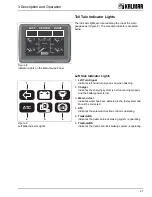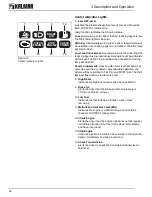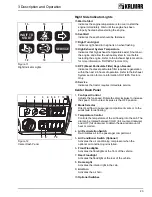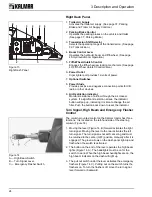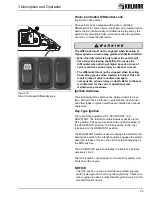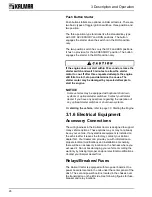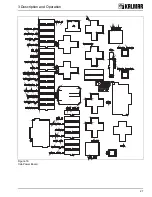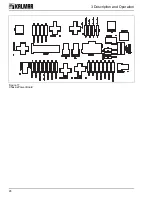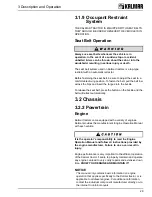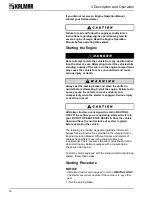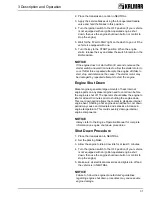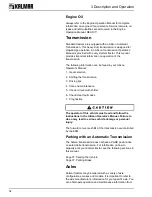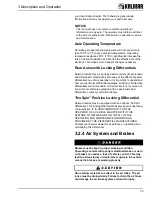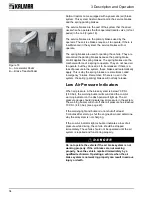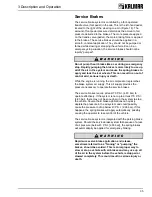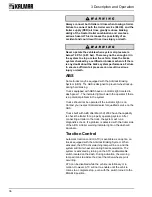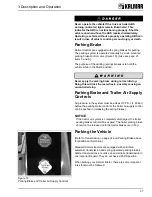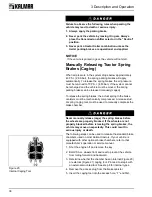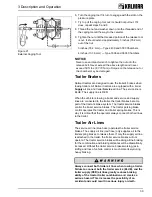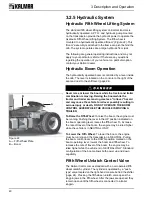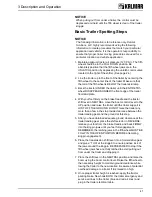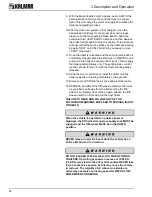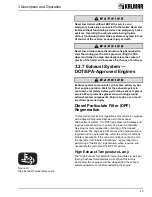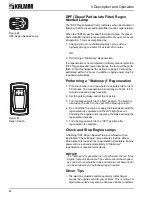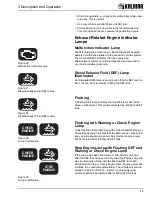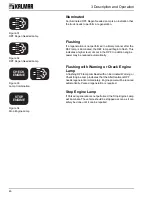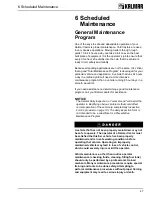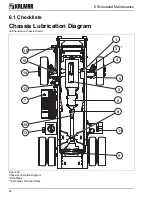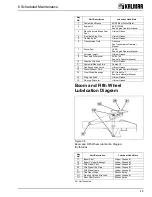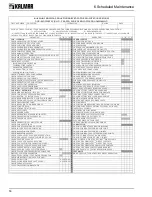
3 Description and Operation
35
Service Brakes
The service brake system is controlled by a foot-operated
treadle valve (foot pedal) in the cab. This is the left-hand pedal,
located to the right of the steering column (Figure 18). The
amount of foot pedal pressure determines the amount of air
pressure delivered to the brakes. The more pressure applied
on the treadle valve (pedal), the more braking force is applied
to the brakes. The service brakes should be applied in a
smooth, constant application. They should not be pumped or
fanned while slowing or stopping the vehicle. Even in an
emergency stop situation, the service brakes should not be
rapidly “pumped”.
Do not pump the air brakes like a car during an emergency
stop. Rapidly pumping the brakes is more likely to use up
all of the air in the system and cause the spring brakes to
apply and lock the rear wheels. This can result in an out of
control skid, serious injury or death.
While the engine is running, the air compressor replenishes
the brake system air supply. This air supply provides the
pressure necessary to operate the service brakes.
The service brakes require at least 70 P.S.I. (4.83 bar) to
operate effectively. If the system is not up to at least 70 P.S.I.
(4.83 bar), there may not be enough air in the system to stop
the vehicle. Several hard brake applications can quickly
deplete the pressure in the air system and could possibly
cause the pressure to drop below 43 P.S.I. (2.96 bar). If this
happens, the spring brakes will apply automatically, possibly
causing the operator to lose control of the vehicle.
The service brake system is integrated with the parking brake
system. Should the service brake system fail because of a lack
of air pressure (below 43 P.S.I. [2.96 bar]), the spring brakes
will automatically be applied for emergency braking.
Rapid successive brake application and release,
sometimes referred to as “fanning” or “pumping” the
brakes, should be avoided. This is an improper way to
slow or stop a vehicle with air brakes and may use up all
of the air in the system before the vehicle is stopped or
slowed completely. This could result in serious injury or
death.

